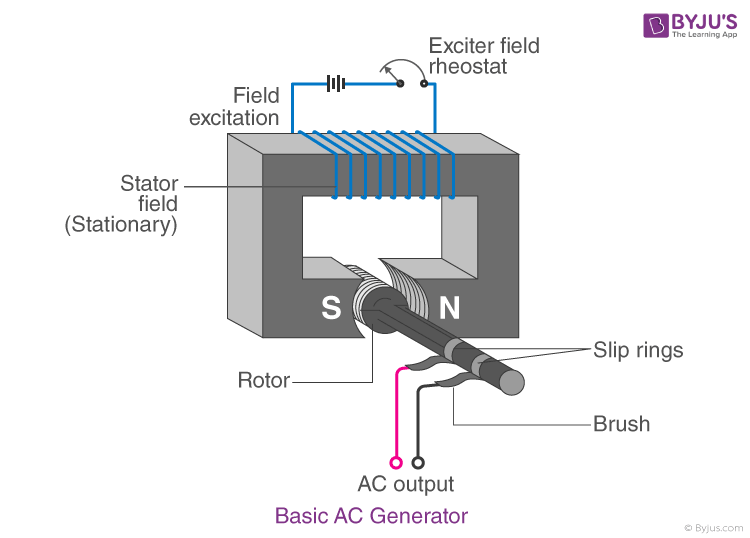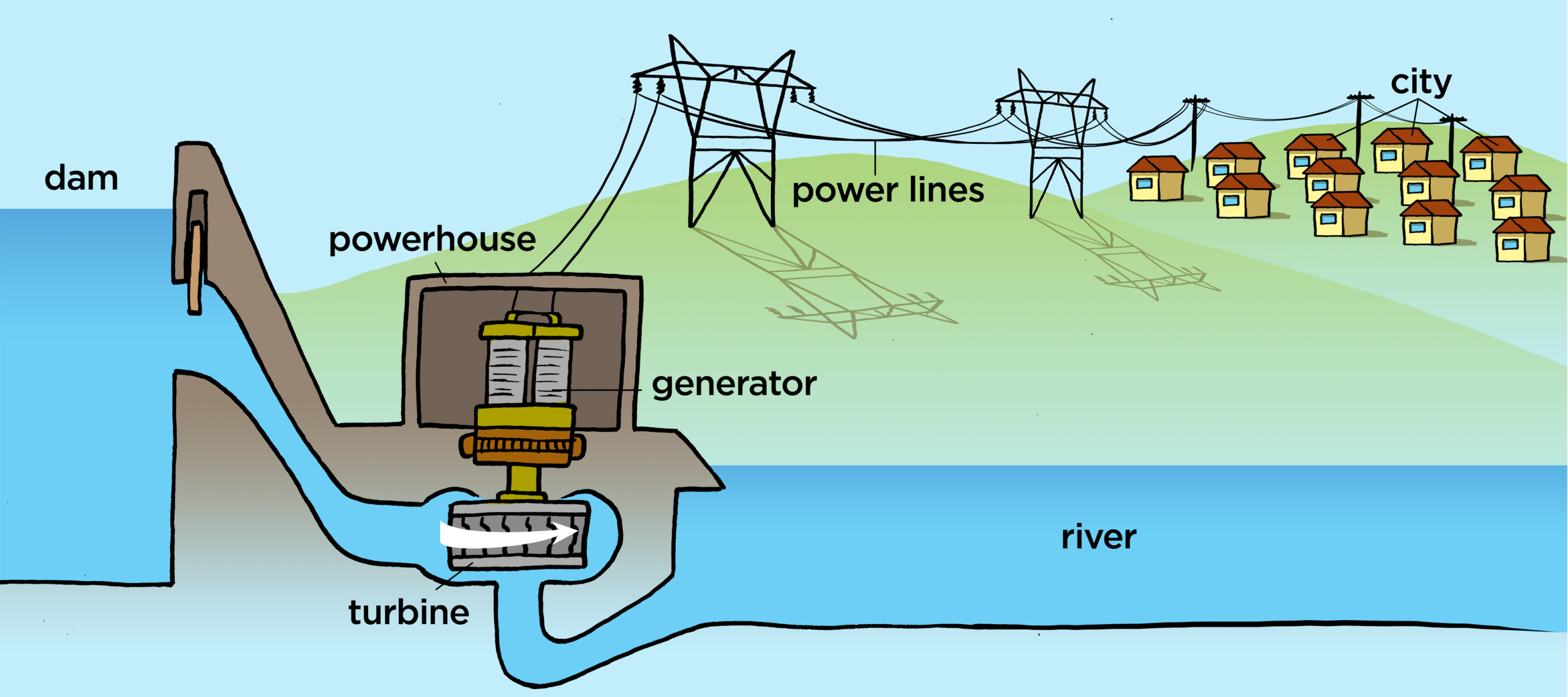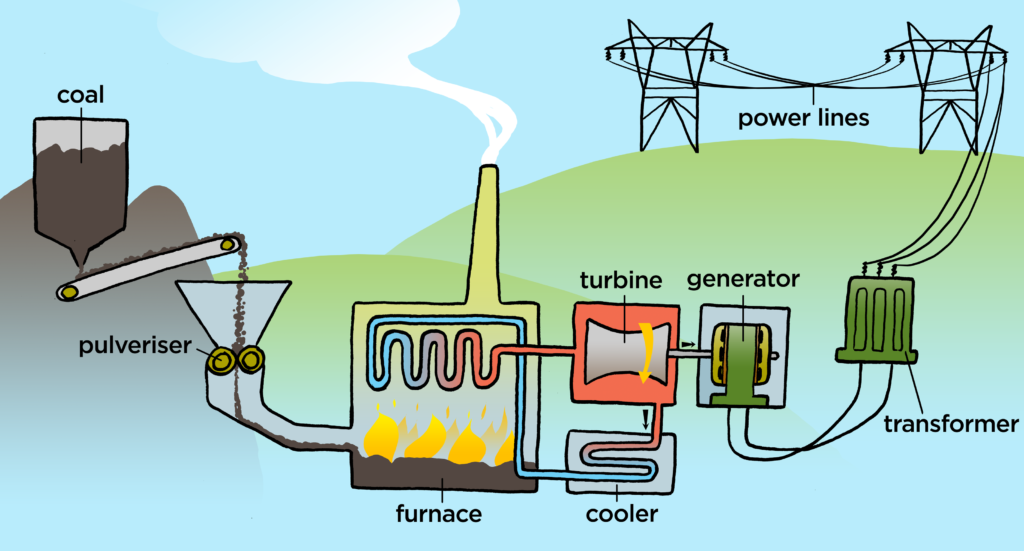Applications of AC Generators– Synchronous Generators or Alternators are rotating devices, which are used in many applications. They usually work at constant speed and frequency and get the power of rotation from a prime-mover.
AC generators convert this power to electrical power at a specific voltage and frequency depending on the prime mover and its design. Synchronous generators are usually three-phase, and it makes the transmission and distribution much better and have advantages over one phase.
A wide variety of AC generator equipment, devices, and related products are available on the market today. You can rely on us for as much information as you need to make an informed decision about what is suitable for you. Linquip’s team of experts would be our pleasure to assist you with any questions you may have about AC generators. Feel free to reach out to us at any time, as we are available 24/7. You might find it helpful to read Linquip’s article entitled, “Generator: Working Principles, Function & Diagram.”
As soon as you become a Linquip Expert, you will have access to all of the great benefits Linquip has to offer. By creating a Linquip account, you will be able to demonstrate your industrial technology skills in a way that matches the needs of the industry. Do you have any interest in contributing to Linquip as a Guest Poster? Guest Posting is an option Linquip offers for publishing your content on its platform upon request.
Alternating Current
Most electrical machines and devices that utilize AC are connected to the global electrical grid. The rest of them, such as laptops or phones, need an AC adaptor for converting AC to DC form. The advantages of AC over DC made it a more regular global choice. In what follows, a simple review of AC and DC and their advantages are summarized:
- It is easy to step down or up the voltage in AC lines by using transformers.
- AC is easy to use and has economical transmission for electrical power.
- Using transformers saves a lot of money for suppliers and the consumer and reduces pollution, as power plants need less fuel and produce less pollution.
- AC motors have less maintenance cost.
- By using a circuit breaker, we can interrupt the current easily.
- We can transmit a 3-phase current and voltage.
Parts of AC Generators
Ac generators include many parts and the rotor and the stator are recognized as the main parts. AC generators can be used in many different applications and can be found in all industries. Because of their versatility and power ranges, they are part of the most advanced systems in modern systems. Parts of generators are:
Field
This part produces the magnetic flux in the presence of the voltage. It has many coils working together and has the responsibility of excitation in the generator.
Armature
The voltage source in the generators is the armature, and it is because of the magnetic flux in the system. This part consists of a battery and wires to carry the full load voltage and the current in the system.
Prime Mover
The force or power in the generators, which is the source of physical energy, is called the prime mover. Turbines in the gas, hydraulic power plant, and wind harvesting systems are examples of the prime mover.
Rotor
The rotating part of the generator is called the “rotor,” as is implied by the name. This part rotates because of the prime mover and can be the armature or the field, depending on the design and applications.
Stator
It works with the rotor and is the stationary part of the designed system. It can be the armature or the field, the same as the rotor.
Slip Rings
Slip rings are electrical connectors in the rotor for transferring power to and from it. It is insulated from the shaft while bound to the rotor windings. This electric connection to the rotor is made by brushes.
Shaft Bearings
Prime mover connects to the generators by a shaft, which uses many bearings accurately positioned in the system. Using these bearings cut down the friction and “wear and tear.”

Application of AC Generators
Ac generators are used widely in many different applications. All the power stations use AC generators to produce alternating current. These devices can be categorized based on the different applications of AC generators. Some applications of AC generators are listed below:
- Marine alternators – these types are used for generating power in marine applications.
- Brushless alternators –these types are the main source of power in electrical power plants.
- Diesel-electric locomotive alternators – locomotives need electric and mechanical power simultaneously, and the source of power is AC generators.
- Automotive alternators – modern automobiles use generators for satisfying electric power. All the electric power in the vehicles and charging the battery is generated in AC generators.
- Radio alternators – these types are used for transmission of radiofrequency in low bands.
Application of AC Generators in Long-Distance Transmission
AC generators produce an electric current in different power stations. Hydro and wind turbines, power plants, and other energy harvesting systems use AC generators to produce alternating currents for cities and facilities. AC is appropriate for the transmission of electrical energy long-distance, and as a result, AC generators are the essential part of each power source.
Power loss in power transmission is a major problem that should be solved. There are kilometers of transmission lines, and due to the resistance of the cable, power loss shows itself by heating in cables, so we have a lot of power loss in the transmission lines. AC and transformers include key roles in this process.
Power loss shows itself by a lower voltage at the end of transmission (cities, facilities, etc.). AC can be transmitted easily by using transformers. Power loss is proportional to the I^{2}, and we should reduce the current in the lines. Transformers reduce the current and increase the voltage in the lines by using electromagnetic induction.

What Are the Benefits of AC Generators?
Transformers enable AC generators to be easily stepped up or stepped down. Additionally, it reduces transmission losses and the size of transmission links. AC generators have less loss than DC generators. Compactness is one of the features of AC generators.
What Are the Advantages of AC Generators Over DC Generators?
The energy losses associated with AC generators are very low, which makes them very efficient. Sparking and other losses, such as copper, eddy current, mechanical, and hysteresis losses, make DC generators less efficient. An AC generator periodically reverses the direction of the electrical current.
Download Applications of AC Generators PDF
The post includes a PDF document that you can save for future reference and use whenever necessary. Click on the link below to download the PDF file.
Buy Equipment or Ask for a Service
By using Linquip RFQ Service, you can expect to receive quotations from various suppliers across multiple industries and regions.
Click Here to Request a Quotation From Suppliers and Service Providers
Read More on Linquip
- Difference between AC and DC generators: An easy to understand guide
- Working Principle of AC Generator
- What is Generator Efficiency? Calculation & Formula Guide
- What are the parts of AC Generators?
- A Clear Classification of AC Generators
- What Is a Generator? A Comprehensive Explanation of Working Principles, Types, and Components
- Electric Generator Maintenance, Repair, and Services
- Gasoline Generator Repair and Maintenance
- How Much Does It Cost to Install a 22kW Generac Generator?
- How Long Can A Standby Generator Run Continuously?
- What is the Difference Between a Whole House and Standby Generator?
- The Difference Between Prime & Standby Generators
- Can I install a Standby Generator Myself? (An All-In-One Guide)
- Portable vs. Standby Generator (Best Choose for Home)
- DC Generator Repair, Maintenance & Testing (Full Guide)
- Pros and Cons of Inverter Generators



